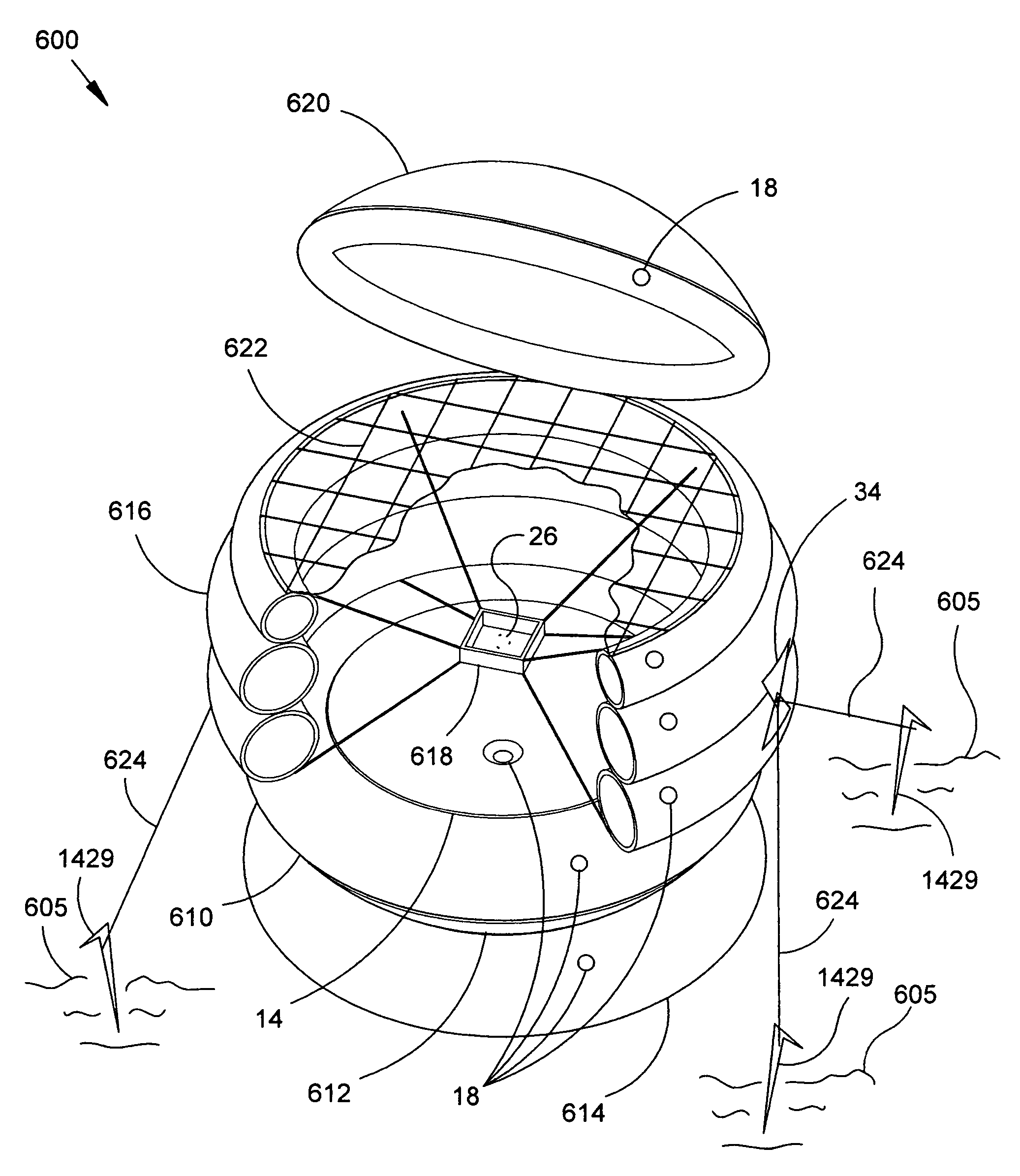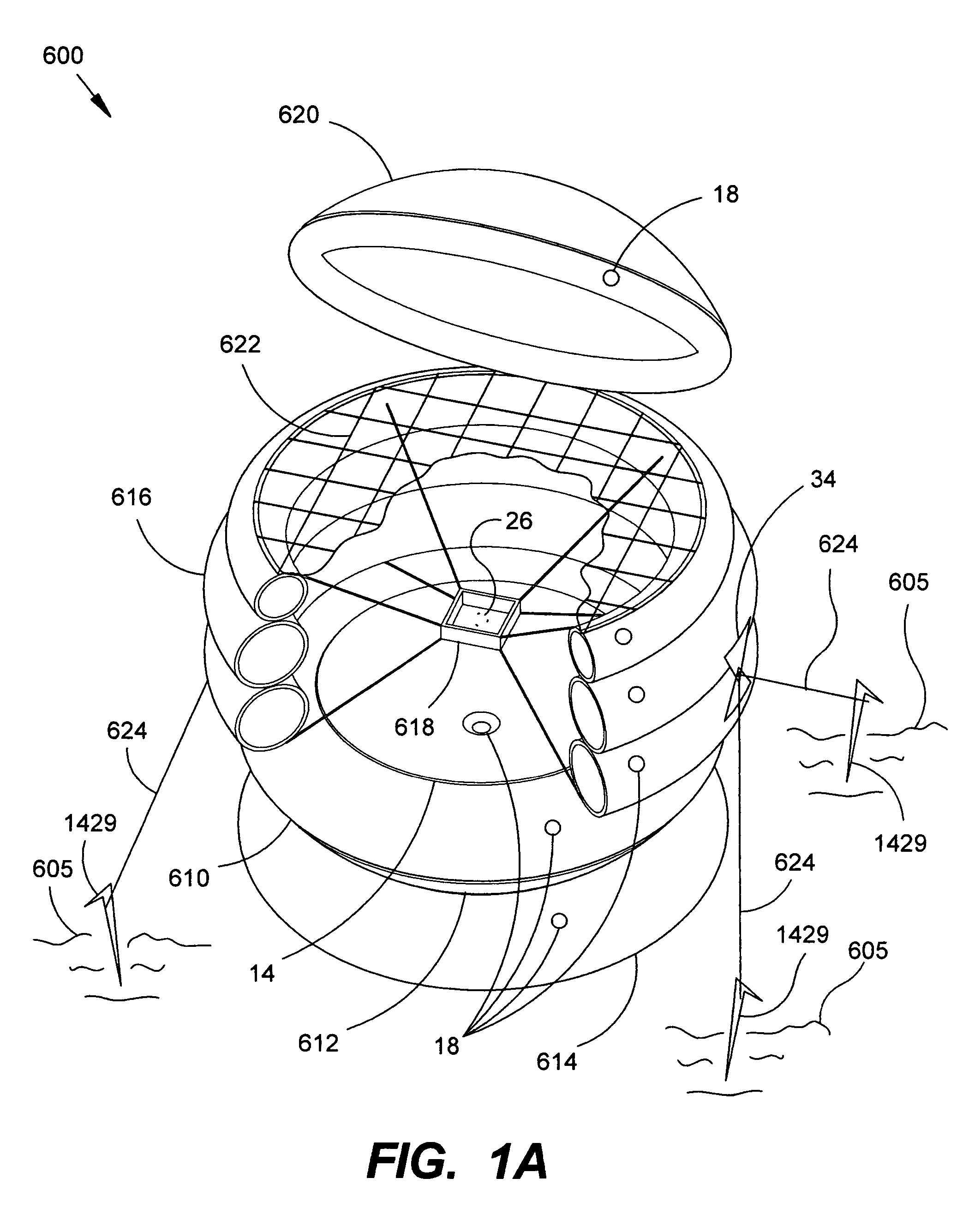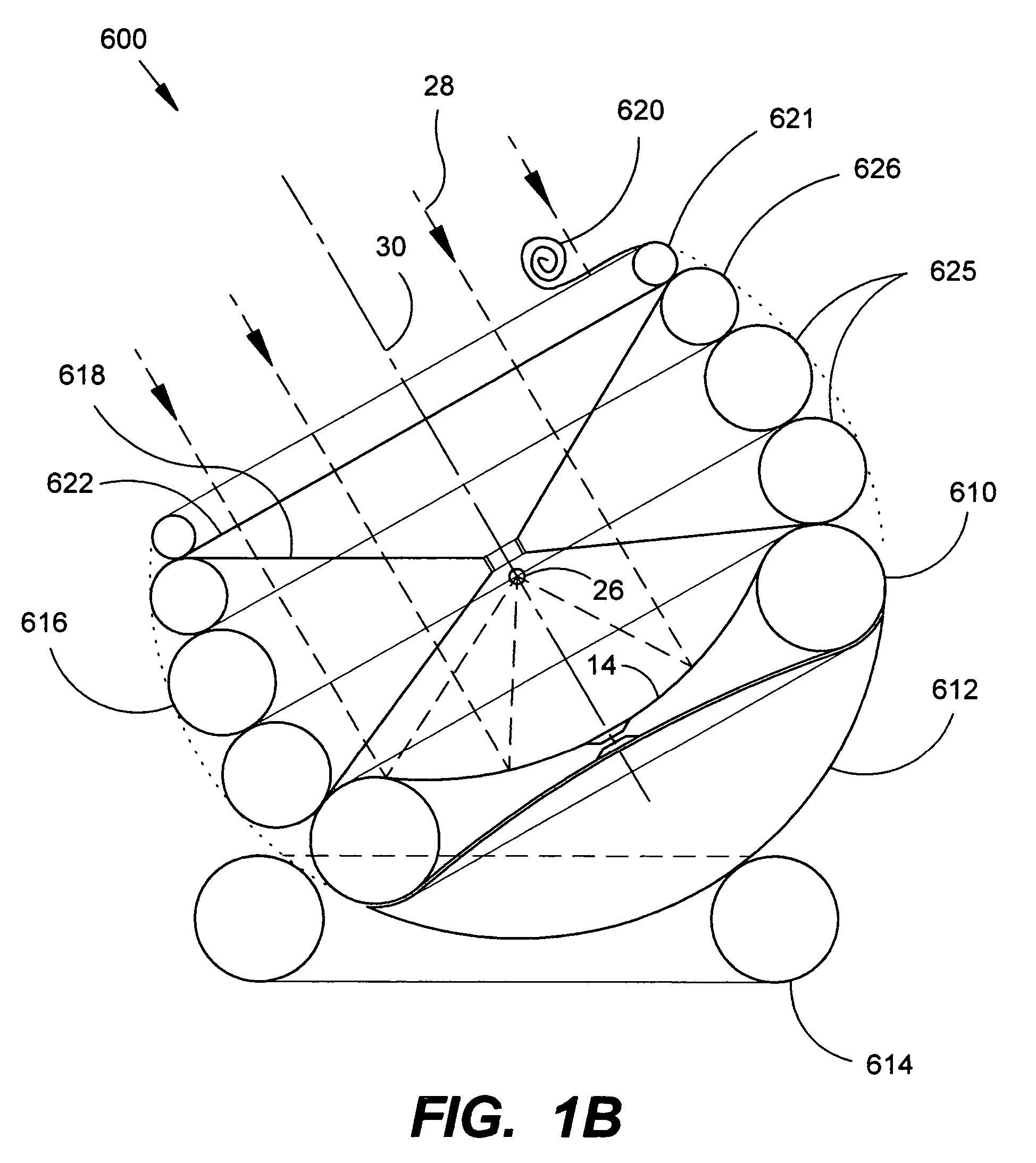Multi-function field-deployable resource harnessing apparatus and methods of manufacture
a multi-functional, resource-harnessing technology, applied in the direction of lighting and heating apparatus, reverse osmosis, instruments, etc., to achieve the effect of minimizing air, water, ground pollution and being environmentally friendly
- Summary
- Abstract
- Description
- Claims
- Application Information
AI Technical Summary
Problems solved by technology
Method used
Image
Examples
first embodiment
[0217]FIG. 3A depicts the first main embodiment device 610 deployed in sub-ambient mode as an electromagnetic radiant ray concentrator having the focal axis 30 of the pre-formed parabolic reflective membrane 14 oriented toward the sun (not shown). The radiant solar rays 28 are reflected by the pre-formed parabolic reflective membrane 14 to focus on an energy-absorbing object (not shown) placed at the focal point 26.
[0218]Regarding the instant device's ability to capture and concentrate electromagnetic radiation, it should first be noted that a device deployed in sub-ambient mode allows the electromagnetic rays to travel unobstructed to and from the reflector, thus providing superior capture efficiency relative to much of the related art as well as the second main embodiment of the instant invention (capture efficiency is defined herein as the portion of the incoming radiant energy that is delivered to the focal point and local surrounding area). As an example, when operated in sub-a...
second embodiment
[0226]In FIGS. 4A and 4B, the second main embodiment device 386 is illustrated as an inflated toroid or ring support element 400 supporting an upper transparent membrane 388 and a lower reflective membrane 390. The transparent membrane 388 and reflective membrane 390 provide a central reflector chamber (i.e., pressure envelope) 392 with a double parabolic convex-convex lens configuration when inflated to a super-ambient pressure. The transparent membrane 388 has a centered inflation valve 18 for inflating the reflector chamber 392; however, it is noted that the inflation valve 18 may alternatively be located at any other useful location such as in the reflective membrane 390. The inflatable toroidal support element 400 also has a valve 18 for inflation to form a rigid ring. Two valves are shown for separate inflation of the ring support 400 and the reflector chamber 392; however, it is noted that the two pressure envelopes (the toroid 400 and the reflector chamber 392) can be interc...
third embodiment
[0234]FIGS. 4K-O illustrate the construction and use of simplified alternate inflatable reflector apparatuses (third main embodiment) having only one membrane shown attached to an inflatable (or, optionally, otherwise collapsible or rigid) support element.
[0235]FIG. 4K depicts an alternate simple planar reflector or mirror apparatus 1510 provided by attaching as few as one planar (i.e., non-preformed) reflective membrane 1512 to the support ring 400. Although such an apparatus having only a single membrane is generally not operable as a single apparatus to concentrate electromagnetic energy, the apparatus 1510 can effectively serve as a highly portable self-imaging mirror, a photographic light reflector and / or diffuser, and / or a radiant electromagnetic energy heat shield (such as to shield a person, object, or other item from radiant energy emitted from a fireplace, campfire, of other radiant heat source). However, an array or plurality of such apparatuses may be used to concentrate...
PUM
| Property | Measurement | Unit |
|---|---|---|
| diameter | aaaaa | aaaaa |
| diameter | aaaaa | aaaaa |
| diameter | aaaaa | aaaaa |
Abstract
Description
Claims
Application Information
 Login to View More
Login to View More - R&D
- Intellectual Property
- Life Sciences
- Materials
- Tech Scout
- Unparalleled Data Quality
- Higher Quality Content
- 60% Fewer Hallucinations
Browse by: Latest US Patents, China's latest patents, Technical Efficacy Thesaurus, Application Domain, Technology Topic, Popular Technical Reports.
© 2025 PatSnap. All rights reserved.Legal|Privacy policy|Modern Slavery Act Transparency Statement|Sitemap|About US| Contact US: help@patsnap.com



